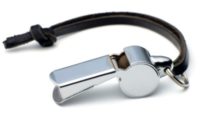 The U.S. Bureau of Labor Statistics has just released its final count of workplace fatalities for 2013 (the latest year calculated) showing California’s death toll that year to be 396 — more than one worker killed every day — with 21 more fatalities than in 2012. The 2013 figure is the highest number of deaths since 2009.
The U.S. Bureau of Labor Statistics has just released its final count of workplace fatalities for 2013 (the latest year calculated) showing California’s death toll that year to be 396 — more than one worker killed every day — with 21 more fatalities than in 2012. The 2013 figure is the highest number of deaths since 2009.
Latino worker deaths in 2013 were 42% higher than the year before — 194 deaths in 2013 compared to 137 in 2012. The death rate jumped to 3.2 per 100,000 Latino workers in 2013 compared to 2.3 per 100,000 in 2012.
Meanwhile the latest available organization charts for Cal/OSHA indicate there were 184 filled field compliance officer positions in March 2015 -- a reduction of 4 inspectors from February 2015, reflecting continuing retirements among compliance officers.
The March 2015 tally means California had an inspector to worker ratio of 1 inspector to 102,914 workers — much worse than Fed OSHA’s ratio of 1 to 59,000, Washington States’s ratio of 1 to 25,000, and Oregon’s ratio of 1 inspector to 22,000 workers.
The Department of Industrial Relations has a pending “Budget Change Proposal” that would add 26 field compliance officer positions over a two-year period from July 2015 to June 2017. The BCP needs to be approved by the state legislature in June as part of the 2015-16 budget. It is unclear whether the 19 vacant compliance officer positions in March 2015 will be filled, and if so, whether these positions will be in addition to or part of the 26 inspector positions in the proposed BCP.
Initial Analysis: DIR’s Budget Change Proposal for Cal/OSHA California State Fiscal Year 2015/16
On January 10, 2015, Governor Jerry Brown released his proposed budget for the state’s fiscal year 2015/16 which begins on July 1, 2015. Included in the budget was a “budget change proposal” (BCP) for the Department of Industrial Relations (DIR) to fund new positions in the Division of Occupational Safety and Health (DOSH or Cal/OSHA).
The BCP requests funding for 44 new positions at DOSH – including 34 inspector positions, some of who will perform non-inspection tasks – and proposes a new “Assistant District Manager” position and changes in the California Labor Code.
While any hiring of field compliance officers is welcome, and this proposal is a good start at addressing DOSH’s understaffing, the contents of the BCP will not (as claimed) “meet the national average” of inspectors; it is not sufficient to end Cal/OSHA’s non-compliance with federal benchmarks and state law; it raises questions about the quality of future inspections by raising the number of inspections to be done per inspector; and the proposed change to the Labor Code would weaken Cal/OSHA’s response to worker complaints about unsafe and unhealthy conditions.
The DIR BCP hiring should be funded to begin to reduce Cal/OSHA’s understaffing, but how these new hires are to be used should be reconsidered and revised.
Field compliance inspector staffing
The BCP claims that Cal/OSHA currently has an inspector to worker ratio of 1 to 69,000 (page 6), and the addition of 34 more inspectors would give California the same ratio as Federal OSHA. This is simply not true.
The basis for the claim is a chart in Attachment IV indicating that there are 14,959,808 workers in California and 203 DOSH inspectors. The chart also says the inspector-worker ratio for California is 1:73,694 – not the 1:69,000 in the BCP text. But the chart’s data is false.
There have not been as few as 14.9 million workers in California since 1997 – 18 years ago. The California Economic Development Department (EDD) data for December 2014 shows 18,822,000 workers in the civilian labor force in California, with 17,467,000 employed workers. The BCP uses 18-year-old data to generate the “magic number” of 34 inspectors it claims would equal the national inspector-worker ratio.
Nor is the number of inspectors correct. There are not 203 field compliance inspectors in Cal/OSHA – in December 2014 there were 185 filled positions and 16 listed vacancies, for a total of 201 positions.
The actual inspector (185) to worker (18.8 million) ratio in California is 1 inspector to 101,740 workers. Hiring 34 additional inspectors – even though not all of them will be doing field inspections – would only bring the ratio down to 1:85,554, well above the Fed OSHA average of 1:59,000.
Actual increase in field inspectors
The 44 new positions include 4 more attorneys, 2 legal secretaries and 4 administrative staff – all of which are needed and this is good for the Division. The 34 Safety Engineer (SE) positions in the BCP are broken down as 16 SEs to be Assistant District Managers (50% time to be spent doing inspections), 4 SEs for District Office inspections (4 total for the 17 District Offices), and 14 SEs to work out of the District Offices on high hazard inspections.
This means a net increase of 26 field inspectors: 14 SEs doing high hazard inspections, and 12 SEs (4 plus the 8 half-time equivalent of Assistant DMs) doing District Office inspections in response to worker complaints, accidents and some programmed inspections. There are 17 District Offices in Enforcement plus 2 High Hazard Unit offices, 2 Labor Enforcement Task Force offices and 2 Process Safety Management offices.
In December 2014, the DIR staffing charts for DOSH compliance offices listed 16 vacant positions. It is not stated in the BCP whether these 16 vacant positions will also be filled – or whether the 26 positions to funded by the proposed BCP include filling the vacancies, leaving a net increase of only 10 field compliance inspectors by June 2016.
There are no proposed new positions for the Mining & Tunneling unit of Cal/OSHA, which now has only 7 field inspectors, half of the 15 inspectors it had in 2000. The unit is currently unable to comply with state law that Cal/OSHA inspect all tunneling projects six times a year and all underground mines quarterly. More than a dozen new tunneling projects will begin the next 18 months.
The BCP prioritizes planned high hazard industry inspections over worker complaints and investigations of accidents. Planned inspections of high hazard workplaces are very important, but not at the expense of reduced response to accident investigations and worker complaints. The 17 District Offices will receive the equivalent of only 12 new inspectors, even fewer if the new Assistant DMs are not able to devote half their time to field inspections.
The District Offices are already unable to meet either the Fed OSHA benchmarks or state law requirements for opening and closing inspections in a timely manner, conducting follow-up inspections where Serious citations were issued, and conducting planned inspections of construction sites and workplaces where asbestos and lead are in use.
The proposed change to the Labor Code to lengthen the time Cal/OSHA has to respond to worker complaints to 30 days will mean reported unsafe and unhealthy conditions will not be evaluated in a timely way. State law currently requires DOSH to open complaint inspections within 3 days for serious hazards and no later than 14 days for all complaints.
Waiting as much as a month to respond to a worker complaint means hazardous conditions can exist for an extended time without evaluation and correction. In construction and agriculture, for example, work sites can change completely in 30 days, and effective complaint inspections are nearly impossible if delayed this long.
Increased workload = less effective inspections
Embedded in the BCP are new goals for the number of inspections conducted annually by field compliance officers. The current average is 43 a year, according to the BCP, and the new goals are 45 inspections for SEs doing high hazard inspections and 62.5 inspections for SEs doing District Office accident and complaint inspections. The BCP notes the average for “state plan” OSHA programs is 50 inspections per year for inspectors.
This 50% increase in inspections per SE for complaint and accident inspections raises the issue of how thorough, complete and effective these inspections will be. “Once over lightly” or “drive-by” inspections to meet increased production goals will not capture all hazards on site. There will be more inspections with zero citations issued, and fewer citations issued per inspection. Abbreviated inspections will be less able to withstand employer appeal of Serious and other citations.
The 50% increase in inspections also means that even fewer “health” inspections involving time-consuming evaluation of worker exposures to chemicals, infectious disease, noise and ergonomic hazards will be conducted. Already Cal/OSHA conducts too few health inspections, and the pressure to meet increased goals will mean the causes of occupational diseases and illness will go unevaluated.
Initial conclusion
The BCP’s proposed funding of 44 new positions for Cal/OSHA is a welcome and long-overdo development. The money for these new positions should be approved by the Legislature and signed by the Governor. However, this should be just the beginning and not the end of additional resources for Cal/OSHA, which will still be unable to meet Federal benchmarks and state law even with these additional staff.
Moreover, the DIR BCP should be honest about its actual, limited impact and not “cook the books” with 18-year-old data to claim DOSH’s enforcement staffing levels will match the national average when they will not. Cal/OSHA will still have fewer field compliance officers protecting workers than the 250 Fish & Game Wardens protecting California’s wild life.
The implementation of the BCP should be revised to allocate more resources now to the District Offices handling worker complaints and accident investigations. The increased production goals should be revised to not create “numbers game” pressure for “once over lightly” inspections, more no-citation inspections, and the virtual elimination of health inspections.
The Mining & Tunneling unit should receive more resources to meet the requirements of state law – which is now unable to do – and to prepare for a substantial increase in work in coming years.
The DOSH Medical Unit – now just one physician and one occupational health nurse – is also not slated to receive any new resources despite the increased global dangers of infectious diseases and the requirements of new California laws on “safe patient handling” and workplace violence in healthcare facilities.
DOSH has never had a line item in its budget for the Professional Development & Training Unit, so the training program has periodically gone “on hold” due to financial constraints over the last decade. With the influx of 44 new positions, training and mentoring of new hires will be crucial. The PD&TU needs a dedicated line item budget from DIR.
The way for Cal/OSHA to meet its legal mandates and mission is not to weaken the workers’ legal protections or generate “improved” performance statistics that mask less effective inspections.
The way forward is to give Cal/OSHA the resources it needs to actually meet the letter of California law and to be pro-active in protecting the health and safety of all 18+ million workers in California. This BCP is a good start, but how it will be implemented needs revision.
DOSH Enforcement Staffing Summary chart – February 2015
Sources
California Economic Development Department (EDD) employment data
Text of DIR’s Budget Change Proposal
Summary Chart of DOSH’s Enforcement staffing in December 2014



